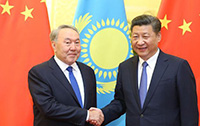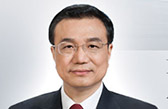Big data can help build better cities for the poor
By Axel Van Trotsenburg (China Daily) Updated: 2015-02-05 07:49Less than 1 percent of the total territory of East Asia is urbanized (close to the size of Cambodia), and only 36 percent of the total population is urban - suggesting significant scope for urban growth in the decades to come.
The report also exposes some of the challenges posed by urbanization in East Asia. Almost 350 of the East Asian urban areas have expanded across local administrative boundaries, thereby fragmenting their management and revenue sources. In some cases, multiple cities are merging into a single entity while they continue to be administered separately.
While urbanization in the region is largely driven by market forces, policymakers at the national and municipal levels have an important role to play in ensuring that it is sustainable and inclusive.
We are releasing this comparable data so that governments, urban leaders and researchers in East Asia and elsewhere can get a better picture of recent trends and ensure that the unstoppable demographic, social and political transformation of cities, helps reduce poverty and boost shared prosperity.
The report offers new ways of looking at where urbanization has gone wrong and where it is done right so that it works for the people. Some of the best policy approaches include facilitating access to land and guiding development so it can occur efficiently, ensuring high-density areas are well located and planned to produce a livable and walkable environment, addressing the entire system of cities by coordinating urban services across municipalities and governments, and making urbanization inclusive so economic opportunities are available, including to recent urban migrants.
This new urbanization data is a tool to help policymakers and planners build better cities for the millions of people who are moving into East Asia's urban areas. It will also be a useful tool for those outside East Asia to learn from the region's experience.
The author is World Bank vice-president for East Asia and Pacific.




